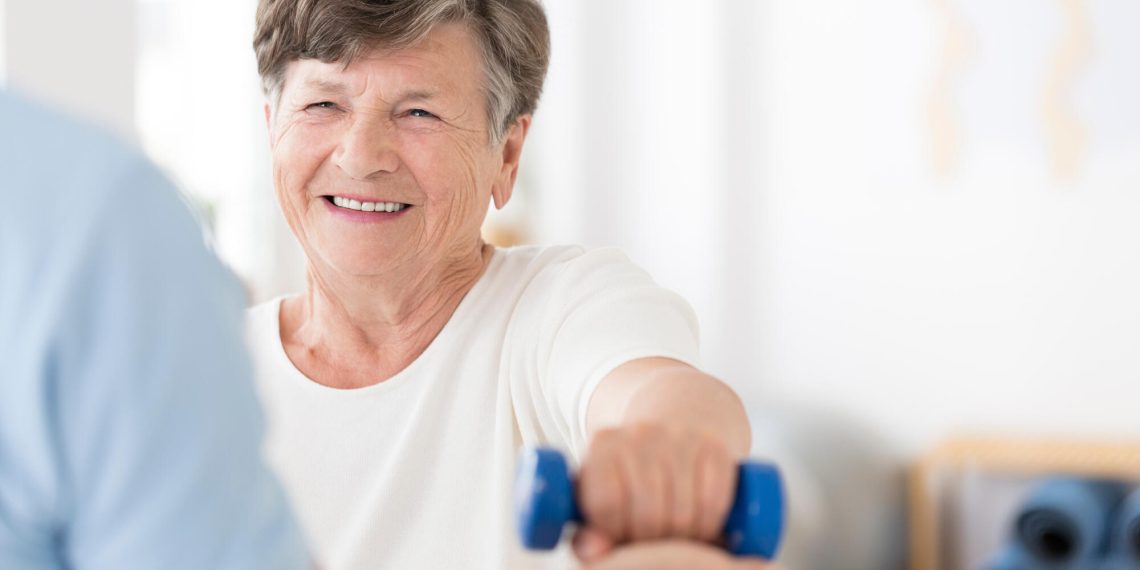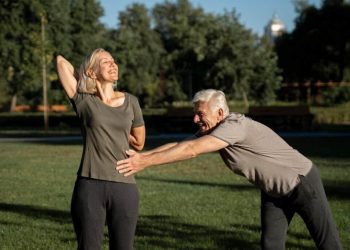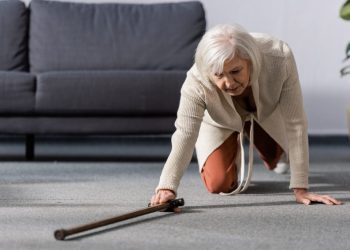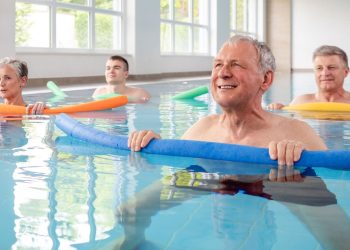Maintaining mobility is one of the most important factors in preserving independence, preventing falls, and enhancing quality of life as we age. While it’s natural for flexibility and range of motion to decrease over time, regular mobility exercises can slow this process significantly and even reverse some of the stiffness many seniors experience.
This guide presents practical mobility exercises specifically designed for older adults, along with strategies for incorporating them into daily routines and progressing safely over time.
Why Mobility Matters
Mobility encompasses more than just the ability to walk from one place to another. It includes the range of motion in your joints, the flexibility of your muscles, and your overall functional movement patterns. Good mobility allows you to:
- Perform daily activities like reaching for items, getting dressed, and bathing independently
- Maintain balance and prevent falls
- Reduce joint pain and stiffness
- Improve circulation
- Enhance overall physical confidence
The good news is that mobility can be improved at any age with consistent, gentle practice.
Getting Started Safely
Before beginning any new exercise program, consult with your healthcare provider, especially if you have existing health conditions, have experienced recent injuries, or take medications that affect balance or blood pressure.
General Safety Guidelines:
- Start slowly and listen to your body
- Never push through sharp or severe pain
- Use supportive furniture or walls for balance when needed
- Wear comfortable, non-slip footwear
- Stay hydrated
- Breathe naturally throughout each movement—never hold your breath
Essential Mobility Exercises for Seniors
Upper Body Mobility
Shoulder Circles
Shoulder stiffness can make everyday tasks like reaching overhead or putting on a coat difficult. Stand or sit tall with arms relaxed at your sides. Slowly roll your shoulders backward in a circular motion 10 times, then forward 10 times. This simple movement lubricates the shoulder joints and releases tension.
Arm Raises
While seated or standing with feet hip-width apart, slowly raise both arms out to the sides and overhead as far as comfortable. Lower them back down with control. Repeat 8-10 times. This exercise maintains the range of motion needed for activities like changing light bulbs or storing items on high shelves.
Neck Rotations
Sit tall and slowly turn your head to look over your right shoulder, hold for 3-5 seconds, return to center, then repeat on the left side. Perform 5 times on each side. For neck side bends, gently tilt your ear toward your shoulder without raising the shoulder, hold briefly, and return to center.
Core and Spine Mobility
Seated Spinal Twist
Sit toward the front of a sturdy chair with feet flat on the floor. Place your right hand on the outside of your left thigh and your left hand on the chair behind you. Gently twist your torso to the left, using your hands for light support but not to force the movement. Hold for 15-20 seconds while breathing deeply, then repeat on the other side. This exercise maintains spinal rotation necessary for activities like checking blind spots while driving or reaching behind you.
Cat-Cow Stretch (Seated Version)
Sit tall in a chair with hands on knees. Arch your back gently, lifting your chest and looking slightly upward (cow position). Then round your spine, tucking your chin toward your chest and drawing your belly button inward (cat position). Flow slowly between these positions 8-10 times. This movement keeps the spine flexible and can alleviate back stiffness.
Lower Body Mobility
Ankle Circles
Sit in a chair and extend one leg slightly. Rotate your ankle slowly in circles—10 times clockwise, then 10 times counterclockwise. Repeat with the other ankle. This simple exercise improves ankle mobility, which is crucial for balance and preventing trips.
Knee Extensions
Seated in a chair, slowly straighten one knee to extend the leg out in front of you, hold for 2-3 seconds, then lower it back down. Perform 10 repetitions on each leg. This maintains knee joint mobility and strengthens the quadriceps, which support walking and standing.
Hip Marches
While seated, lift one knee up toward your chest as far as comfortable, lower it back down, then repeat with the other leg. Alternate for 20 total repetitions (10 per leg). This exercise maintains hip flexibility essential for walking, climbing stairs, and getting in and out of cars.
Standing Hip Circles
Hold onto a sturdy counter or chair back for balance. Shift your weight to your left leg and lift your right knee to hip height if possible. Make small circles with your knee—5 clockwise and 5 counterclockwise. Repeat on the other side. This movement lubricates the hip joint and improves balance.
Full Body Integration
Sit-to-Stand
This functional exercise mimics one of the most important daily movements. Sit toward the front edge of a sturdy chair with feet flat on the floor. Lean slightly forward, push through your heels, and stand up without using your hands if possible. Slowly lower back down with control. Perform 8-10 repetitions. As this becomes easier, try lowering yourself more slowly to build strength.
Walking Heel-to-Toe
Stand near a wall for support and walk in a straight line, placing the heel of one foot directly in front of the toes of the other foot. Take 10-20 steps. This exercise improves balance and coordination while gently challenging ankle and knee mobility.
Creating Your Daily Mobility Routine
Consistency matters more than intensity when it comes to mobility. Here’s a practical framework for incorporating these exercises into your daily life:
Morning Routine (10-15 minutes)
Start your day by moving through gentle exercises while your body is warming up:
- Neck rotations and shoulder circles while still in bed
- Ankle circles and knee extensions after sitting on the edge of the bed
- Cat-cow stretches and seated spinal twists once you’re up
- A few sit-to-stands before breakfast
Midday Movement Breaks (5-10 minutes)
Break up prolonged sitting with short mobility sessions:
- Arm raises and shoulder circles
- Hip marches while seated
- Neck stretches and spinal twists
Evening Wind-Down (10-15 minutes)
End your day with gentle stretching:
- Standing hip circles
- Heel-to-toe walking practice
- Seated stretches while watching television
The key is to make these exercises habitual. Link them to activities you already do daily—stretch while the coffee brews, practice balance while brushing your teeth, or do seated exercises during commercial breaks.
Progressive Approaches: Building on Your Foundation
Once you’ve mastered the basic exercises and can perform them comfortably, it’s time to progress gradually. Here’s how to advance safely:
Weeks 1-2: Establishing the Habit
Focus on performing the basic exercises with proper form. Don’t worry about repetitions or duration—just get familiar with the movements and make them part of your daily routine.
Weeks 3-4: Increasing Consistency
Aim to complete your full routine at least 5 days per week. You should notice movements becoming smoother and easier.
Weeks 5-8: Adding Repetitions
Gradually increase the number of repetitions by 2-3 each week. For example, if you started with 5 shoulder circles, work up to 10-15.
Weeks 9-12: Increasing Range and Hold Times
Try to move through slightly larger ranges of motion as your flexibility improves. Hold stretches for longer periods—progressing from 10 seconds to 20-30 seconds.
Beyond 3 Months: Adding Challenge
- Reduce hand support during balance exercises
- Perform sit-to-stands from a lower chair
- Add light resistance bands to arm exercises
- Try exercises on different surfaces (firm cushion, yoga mat)
- Combine movements (such as arm raises while walking)
Remember that progress isn’t always linear. Some days you’ll feel more mobile than others, and that’s perfectly normal.
Recognizing Progress and Setting Goals
Track your progress in simple ways:
- Can you reach higher overhead than before?
- Do you feel less stiff when getting out of bed?
- Are daily activities like gardening or grocery shopping easier?
- Have you noticed improved balance?
Set small, meaningful goals such as “be able to look over my shoulder comfortably when driving” or “reach the top shelf without discomfort.” Celebrate these wins—they represent real improvements in your quality of life.
When to Seek Professional Guidance
Consider working with a physical therapist or qualified fitness professional who specializes in senior fitness if you:
- Experience persistent pain during or after exercises
- Have significant balance issues
- Are recovering from surgery or injury
- Want a personalized program addressing specific limitations
- Need accountability and motivation
Maintaining mobility as you age is not about achieving the flexibility of your youth—it’s about preserving and enhancing your ability to live independently and enjoy daily activities. These exercises, performed consistently and progressed gradually, can make a meaningful difference in how you move through the world.
Start where you are, be patient with yourself, and remember that every small movement counts. The best mobility routine is one you’ll actually do, so find the exercises that feel good and fit naturally into your day. Your future self will thank you for the investment you’re making today in your mobility and independence.






